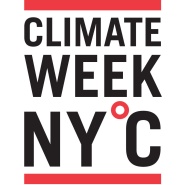
The G-20 meeting will conclude later today here in Pittsburgh, but we can say already that for climate policy, this has not been a quiet week in Lake Wobegon. Here's my highlight reel for the week:
Court rings bell on carbon polluters
The week began with an unexpected bang on Monday, when the federal appeals court in New York ruled that America's biggest electric power companies can be sued in federal court to curb their carbon pollution.
In Connecticut v. American Electric Power, the appeals court held that a coalition of states and private land trusts can sue the nation's five large carbon polluters in federal court because the 650 million tons of carbon dioxide they release each year contribute to rising temperatures and a host of damaging impacts, including heat waves, smog episodes, droughts, forest fires, and rising sea levels.
The five companies - American Electric Power, Southern Company, the Tennessee Valley Authority, Cinergy (now Duke Power), and Xcel Energy - now face trial before a federal judge in New York City, where the states and land trusts will seek an injunction to cut their emissions some three percent per year. Citing a century of Supreme Court precedents, the U.S. Court of Appeals for the Second Circuit held that federal courts are empowered to curb damaging carbon pollution unless and until the legislative and executive branches actually regulate that pollution, either under the existing Clean Air Act or the comprehensive new energy and climate legislation pending in Congress.
The decision will send shock waves through American industry. Its most immediate effect may be felt in the Senate, as companies facing their day in court press for passing that climate legislation. "Legislation would be the best approach," American Electric Power's spokesman told the New York Times.
China steps up to the plate
China's President Hu made the biggest news at the UN climate summit on Tuesday by pledging to reduce his country's "carbon intensity" - CO2 emissions per unit of economic output - by "a notable margin" by 2020.
The carbon intensity target is significant for two reasons. First, it represents a strengthening of past commitments to improve China's "energy intensity," and a shift to directly confronting global warming. Indeed, there's a robust discussion inside China on when the country's overall carbon emissions should "peak" and start to decline.
Second, Hu made this pledge in the context of international climate treaty talks. Previously, China has treated energy policy as a purely domestic matter, but Hu signaled a new willingness to engage internationally. See posts by my colleagues here and here.
Hu's move drew positive reaction from some of the Senate's moderates, who want assurances that all major emitting countries will act when we pass new climate legislation. "That's a step in the right direction," said Senator Evan Bayh (D-IN). said: "That's encouraging," said Senate Lindsey Graham (R-SC). "That will help us make decisions on our emission problems."
To be sure, President Hu did not put a concrete number on "a notable margin." But that is to be expected at this stage of the treaty talks. As Copenhagen approaches, look for negotiations to focus on putting numbers to China's pledge, as a part of a broader set of climate pollution targets from the U.S. and other big emitters.
Senate avoids sack, starts gaining yards
My highlight reel ends with the Senate's action on Thursday, turning back an amendment by Senator Lisa Murkowski (R-AK) that would have blocked the Environmental Protection Agency from curbing carbon pollution under the existing Clean Air Act.
The Supreme Court ruled two years ago, in Massachusetts v. EPA, that the current Clean Air Act gives EPA the responsibility to curb carbon dioxide and other heat-trapping pollutants. EPA has proposed the required determination that carbon pollution endangers health and the environment. Under the clean car peace treaty announced by President Obama last May, EPA recently proposed the first carbon pollution standards, for new cars and trucks. Decisions on carbon pollution from power plants, oil refineries, and other big factories are also required under a string of court decisions.
Senator Murkowski proposed a "rider" to EPA's annual funding bill that would have barred further implementation of the Clean Air Act and the Supreme Court decision. According to the Administrator Lisa Jackson, the amendment would have been "a death knell" to the clean car standards. Indeed, the auto industry came out against the amendment.
Senator Murkowski, who says she wants to move forward on climate change legislation, argued that EPA action would "poison the well." But Congress wrote the existing Clean Air Act and EPA is only carrying out its job under that law and the Supreme Court's decision. To be sure, the prospect of new clean air rules, like Monday's appeals court ruling, is motivating companies to support new climate legislation. It's hard to see how passing Senator Murkowski's amendment would have done anything but set back that effort.
The Senate avoided losing yardage by rejecting the rider.
Having avoided the sack, it's time to start gaining yards again. The Senate will do just that next week with the introduction of a comprehensive climate bill by Senators Barbara Boxer (D-CA) and John Kerry (D-MA). Even while health care occupies the center ring, there's lots of serious work underway on climate and energy legislation outside the spotlight in all corners of the Senate. The game is not over.
***This post originally appeared on the NRDC Switchboard.
David Doniger is the policy director of the Natural Resources Defense Council's (NRDC) Climate Center, and their chief global warming lawyer.

